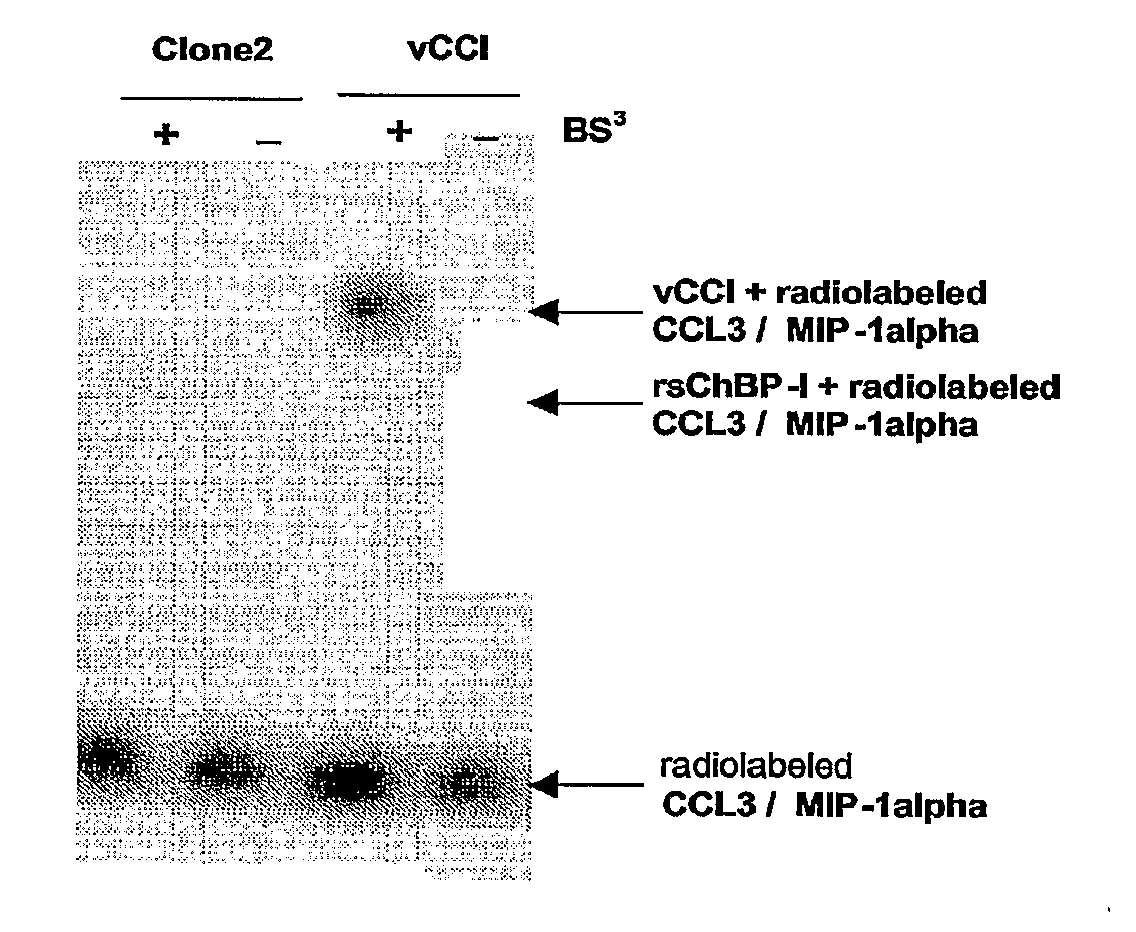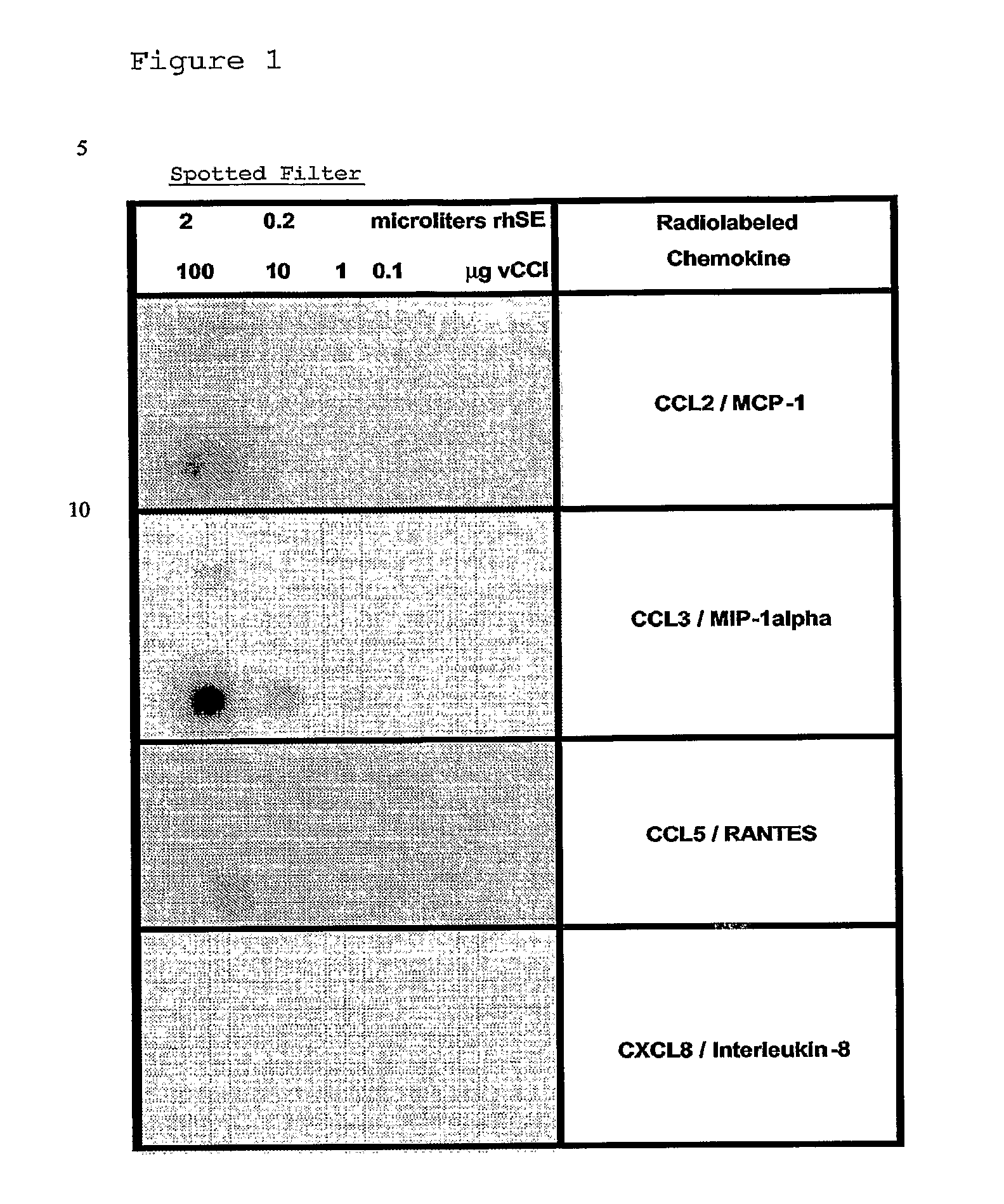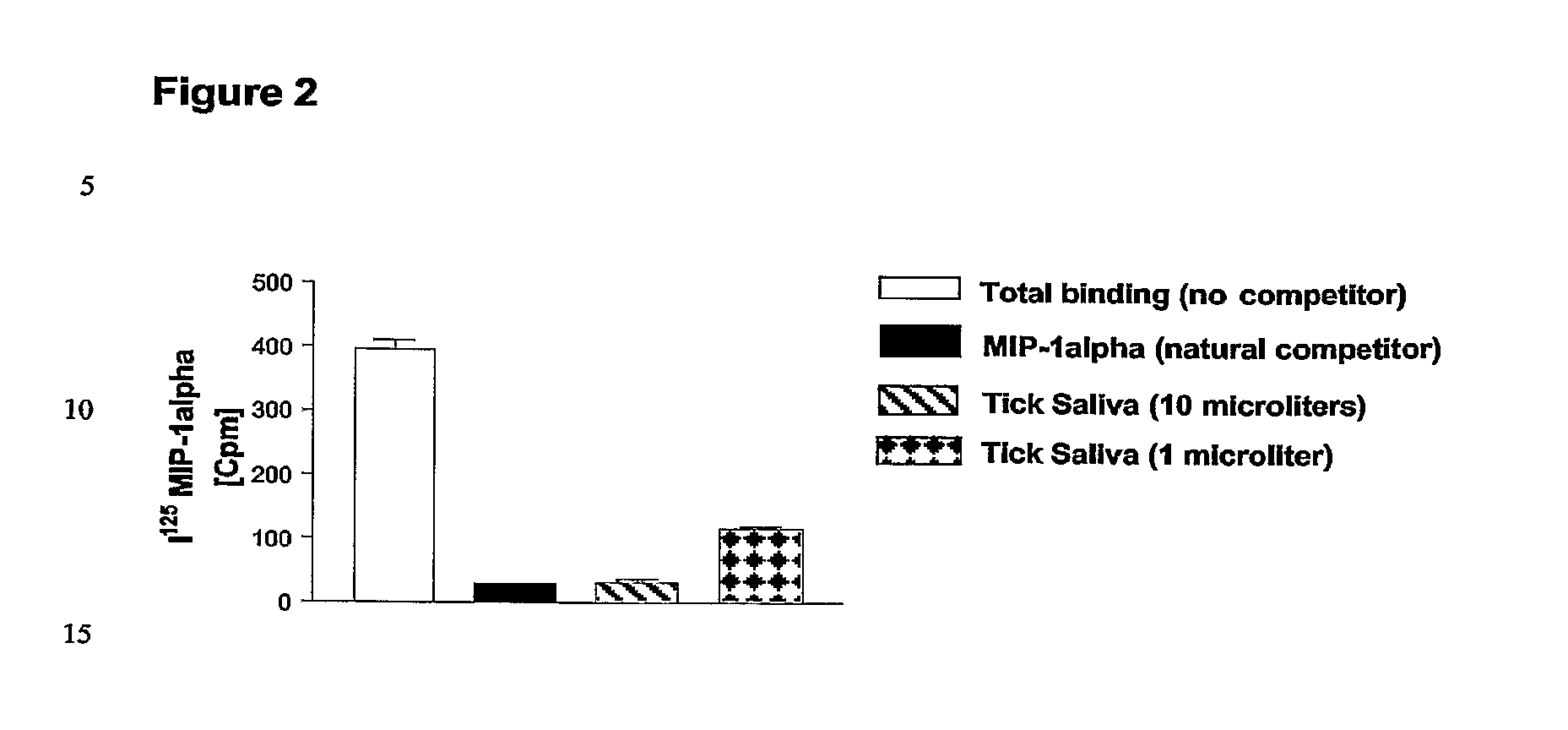Cc-Chemokine Binding Tick Proteins
- Summary
- Abstract
- Description
- Claims
- Application Information
AI Technical Summary
Benefits of technology
Problems solved by technology
Method used
Image
Examples
example 1
Biochemical Characterization of Chemokine-Binding Activities in the Saliva of Rhipicephalus sanguineus (Dog Tick)
[0154] The saliva of the tick Rhipicephalus sanguineus has been already used to identify molecules having immunomodulating activities (Matsumoto K et al., J Vet Med Sci 2003; Matsumoto K et al., 2001; Ferreira B R and Silva J S, 1998) but not binding or modulating activities directed specifically to CC-chemokines.
[0155] Crude Rhipicephalus sanguineus tick saliva was obtained according to the protocol as published (Ferreira B R and Silva J S, 1998). Aliquots of Rhipicephalus sanguineus saliva extracts (rsSE) were tested using different assays including, as negative control, Bovine Serum Albumin (BSA) and, as positive control, an ectromelia virus protein (called vCCl or p35) binding specifically CC-chemokines (Smith V P and Alcami A, 2000; Alcami A, 2003), in order to compare binding specificity and dose-response effects.
[0156] In a first assay, different amounts of rsSE...
example 2
Construction and Screening of a Rhipicephalus sanguineus cDNA Library and Characterization of rsChBP-I
[0162] The CC-chemokine binding activity identified in rhSE was then identified at the level of DNA / protein sequence by generating a cDNA library from Rhipicephalus sanguineus salivary glands that was then used to produce pools of mammalian cells expressing such cDNAs as proteins secreted in the culture medium.
[0163] By comparing the CC-chemokine binding activity detected in culture medium obtained from vCCl expressing cells (or culture medium “spiked” with recombinant vCCl) as a control, these media were then screened using a radiolabeled CC-chemokine (CCL3 / MIP-1alpha), starting from pools of cells and progressively reducing to single cDNA clones.
[0164] Human embryonic kidney cells 293 (HEK293 cells; ATCC Cat. No. CRC-1573; maintained in DMEM-F12 Nut Mix, 10% heat-inactivated fetal calf serum, 2 mM L-Glutamine, 100 units / ml penicillin-streptomycin solution) were chosen to expres...
example 3
Functional Assays Characterizing rsChBP-1
LPS-Induced TNF-α Release by Monocytes
[0177] The biological activity of rsChBP-1 was determined by an assay which tested for the ability of rsChBP-1 protein to inhibit LPS-induced TNF-α release by monocytes.
[0178] A monocyte cell line, THP-1, was seeded in T225 ml flasks at a density of 2.5×105 cells / ml in growth medium (RPMI medium containing 10% FCS, 1% penicillin-streptomycin). The cells were then differentiated by culturing them in 80 nM Vitamin D3 for 72 h. The differentiated cells were plated in 96-well plates at a density of 105 differentiated cells per well, in 150 μl of growth medium. Serial dilutions of rsCHBP-1 protein (as shown in FIG. 6) were added to the cells, in a 50 μl volume, and the cells were left for 24 h in the medium containing the test proteins. The following day, LPS was added to the cells to a final concentration of 2.5 ng / ml, for 3.5 h. The plates were centrifuged, the medium removed from the wells, and stored a...
PUM
| Property | Measurement | Unit |
|---|---|---|
| Fraction | aaaaa | aaaaa |
| Composition | aaaaa | aaaaa |
Abstract
Description
Claims
Application Information
 Login to View More
Login to View More - R&D
- Intellectual Property
- Life Sciences
- Materials
- Tech Scout
- Unparalleled Data Quality
- Higher Quality Content
- 60% Fewer Hallucinations
Browse by: Latest US Patents, China's latest patents, Technical Efficacy Thesaurus, Application Domain, Technology Topic, Popular Technical Reports.
© 2025 PatSnap. All rights reserved.Legal|Privacy policy|Modern Slavery Act Transparency Statement|Sitemap|About US| Contact US: help@patsnap.com



